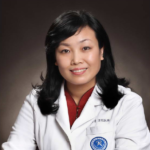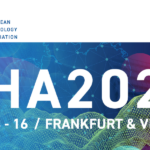
Amsterdam University Medical Center (AMC-UvA)
From June 8th to 11th, 2023, the 28th European Hematology Association (EHA) was held in Frankfurt, Germany, both online and offline. The conference was hosted by the European Hematology Association. As the largest international conference in the European hematology field, it attracts over 10,000 professionals from more than 100 countries each year to share and discuss innovative concepts and the latest scientific and clinical research results in hematology. At the EHA conference site, Oncology Frontier specially invited Professor Niels Van de Donk from Amsterdam University Medical Center (AMC-UvA) to interpret the latest research and future direction of CAR-T in the treatment of relapsed/refractory multiple myeloma (RRMM).
Oncology Frontier: As one of the most important treatments for RRMM, target exploration is a key issue for CAR-T. Could you first discuss the current progress regarding RRMM CAR-T targets?
Currently, there are various CAR-T cell therapies targeting BCMA. The long-term follow-up data of Cilta cel indicates a median progression-free survival (PFS) of 3 years in heavily pretreated patients. This means that Cilta cel, developed by the Chinese Legend Biotech (LEGN), is actually the most effective drug for treating triple class refractory multiple myeloma. We also have Ide-cel, which is effective in this context, but with a slightly shorter median PFS of about 11 months. In the meetings of the European Hematology Association (EHA) and American Society of Clinical Oncology (ASCO), there was a particularly interesting and significant study. This study involved using Cilta cel for earlier lines of treatment, i.e., patients who previously received 1-3 lines of therapy. Compared to standard treatments [such as Daratumumab/Pomalidomide/Dexamethasone (DPD) or Pomalidomide/Bortezomib/Dexamethasone (PVD)], Cilta cel showed a clear advantage. Therefore, we hope that in the near future, Cilta cel will be approved for use in 1-3 lines of treatment, allowing us to employ Cilta cel earlier than currently. Another study, the KARMMA study, also demonstrated the superiority of Ide-cel over standard treatments in a later stage, but this advantage was slightly less than what was observed in the CARTITUDE-4 study.
Oncology Frontier: A research report from your team (P911) discusses Teclistamab targeting BCMA and CD3 for the treatment of RRMM. Could you delve into this study?
We conducted the MAJESTEC-1 study where 165 patients were treated with Teclistamab as a monotherapy at the recommended phase II dose. After nearly two years of follow-up, we observed an overall response rate (ORR) of 63% in heavily pretreated myeloma patients. These patients had previously undergone a median of 5 lines of treatment, with 3/4 of them being triple class refractory multiple myeloma. Delightfully, not only was the response rate high for patients treated with Teclistamab alone, but the depth of the response was also excellent, with 45% of patients achieving complete remission and almost all patients achieving a very good partial response (VGPR) or better. This translated into a median PFS of 11 months and a median response duration of 22 months. For those who achieved complete remission, the median response duration extended to 27 months. During treatment, cytokine release syndrome (CRS) was a notable side effect, but it was well managed using Tocilizumab or steroids. Additionally, infections were common among these patients, but our understanding of infection management has improved, for instance, using a cocktail therapy of Cotrimoxazole and intravenous immunoglobulin (IVIG).
Oncology Frontier: Could you discuss the future research directions of CAR-T treatment in RRMM and your team’s subsequent research approaches?
Based on the outstanding results of CAR-T cell therapy in RRMM patients, CAR-T cell therapy is moving towards earlier lines of treatment. We are about to launch a study, CARTITUDE-6, comparing Cilta cel with transplant therapy. The CARTITUDE-5 study has already assessed the efficacy of Cilta cel in patients unfit for transplant, comparing it to a control group using a VRD regimen. Additionally, we’ve evaluated the effects of Ide-cel in patients who still have residual disease after transplant therapy. Thus, CAR-T cell therapy is shifting from treating advanced stages of the disease to earlier lines of therapy. As for other future prospects, I believe we will utilize various targets, not just BCMA. We hope to combine these targets to achieve dual targeting, prevent antigen escape, and thereby enhance PFS and response duration. Perhaps we will also gain insights into strategies to prevent T-cell exhaustion, like using drugs such as Lenalidomide to improve T-cell function and prevent T-cell exhaustion.



